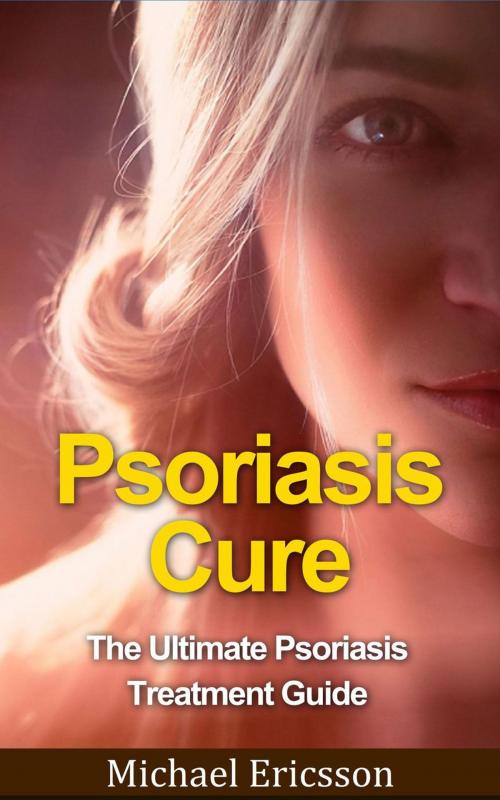Psoriasis Cure: The Ultimate Psoriasis Treatment Guide
Nonfiction, Health & Well Being, Health, Ailments & Diseases, Skin, Healthy Living| Author: | Dr. Michael Ericsson | ISBN: | 9781502271839 |
| Publisher: | Dr. Michael Ericsson | Publication: | February 3, 2015 |
| Imprint: | Language: | English |
| Author: | Dr. Michael Ericsson |
| ISBN: | 9781502271839 |
| Publisher: | Dr. Michael Ericsson |
| Publication: | February 3, 2015 |
| Imprint: | |
| Language: | English |
Psoriasis Cure: The Ultimate Psoriasis Treatment Guide: How To Cure Psoriasis Forever Using 100% Guaranteed Natural Remedies And Treatments! Read on your PC, Mac, smart phone, tablet.
This book contains proven steps and strategies on how to treat Psoriasis through natural ways that are anchored to Naturopathic Medicine.
This book will educate you on Psoriasis and Naturopathy. This contains necessary information on the natural remedies that you could resort to, instead of the synthetic medicines that are found on the market. Not only that, with this book you’ll also understand how Naturopathic Medicine operates. The knowledge that you’ll gain from reading this book will prove to be useful in dealing with other illnesses as well.
Here Is A Preview Of What You'll Learn...
Getting to know Psoriasis
Complications and Options
Naturopathy
Natural Remedies for Psoriasis
Much, much more!
Getting to know Psoriasis
What is Psoriasis?
Psoriasis is a papulosquamous disease. A Papulosquamous disease is characterized by scaling papules and plaques. Other examples of such disease are tinea infections, pityriasis rosea, and lichen planus.
Psoriasis is distinguished from other similar diseases due to the circumscribed, circular, red papules or plaques with a grey or silvery-white, dry scale that are observed in a patient with this condition (National Psoriasis Foundation, 2014). It usually appears on the joint areas like the elbows and knees, and also on the nape and scalp; however, it can appear in any other part of the body such as the genitals, the butt, the armpits, and the back.
Psoriasis is an incurable but non-contagious skin condition. It is a long term skin problem that often gets worse when the person who has it is stressed and agitated. It is not as debilitating as other diseases, but patients with this disease suffer a blow in self esteem and mental soundness.
Psoriasis can be classified into different types. The most common type is the Plaque Psoriasis, then there’s the Guttate Psoriasis, the Inverse Psoriasis, Palmoplantar Psoriasis and Pustular Psoriasis.
Different types of Psoriasis
-
Plaque Psoriasis
Plaque psoriasis is the most prevalent type and is distinguished by the raised reddish patches that are covered with scales. These appear more commonly on the scalp, elbows, knees, and lower back. Usually, they are itchy and inflamed. -
Guttate Psoriasis
Guttate psoriasis starts early in life. This is the second most common type of psoriasis; about 10 percent of psoriasis suffers have this type of psoriasis. This form appears as minute, reddish, separated spots. Guttate comes from the Latin word gutt which literally means small droplets (the lesions appears as such).
Psoriasis Cure: The Ultimate Psoriasis Treatment Guide: How To Cure Psoriasis Forever Using 100% Guaranteed Natural Remedies And Treatments! Read on your PC, Mac, smart phone, tablet.
This book contains proven steps and strategies on how to treat Psoriasis through natural ways that are anchored to Naturopathic Medicine.
This book will educate you on Psoriasis and Naturopathy. This contains necessary information on the natural remedies that you could resort to, instead of the synthetic medicines that are found on the market. Not only that, with this book you’ll also understand how Naturopathic Medicine operates. The knowledge that you’ll gain from reading this book will prove to be useful in dealing with other illnesses as well.
Here Is A Preview Of What You'll Learn...
Getting to know Psoriasis
Complications and Options
Naturopathy
Natural Remedies for Psoriasis
Much, much more!
Getting to know Psoriasis
What is Psoriasis?
Psoriasis is a papulosquamous disease. A Papulosquamous disease is characterized by scaling papules and plaques. Other examples of such disease are tinea infections, pityriasis rosea, and lichen planus.
Psoriasis is distinguished from other similar diseases due to the circumscribed, circular, red papules or plaques with a grey or silvery-white, dry scale that are observed in a patient with this condition (National Psoriasis Foundation, 2014). It usually appears on the joint areas like the elbows and knees, and also on the nape and scalp; however, it can appear in any other part of the body such as the genitals, the butt, the armpits, and the back.
Psoriasis is an incurable but non-contagious skin condition. It is a long term skin problem that often gets worse when the person who has it is stressed and agitated. It is not as debilitating as other diseases, but patients with this disease suffer a blow in self esteem and mental soundness.
Psoriasis can be classified into different types. The most common type is the Plaque Psoriasis, then there’s the Guttate Psoriasis, the Inverse Psoriasis, Palmoplantar Psoriasis and Pustular Psoriasis.
Different types of Psoriasis
-
Plaque Psoriasis
Plaque psoriasis is the most prevalent type and is distinguished by the raised reddish patches that are covered with scales. These appear more commonly on the scalp, elbows, knees, and lower back. Usually, they are itchy and inflamed. -
Guttate Psoriasis
Guttate psoriasis starts early in life. This is the second most common type of psoriasis; about 10 percent of psoriasis suffers have this type of psoriasis. This form appears as minute, reddish, separated spots. Guttate comes from the Latin word gutt which literally means small droplets (the lesions appears as such).















